
Adisham Bungalow or Adisham Hall, a blatant example of colonial history in the nation, was constructed in 1931 close to Haputale in the Badulla District of Sri Lanka. It is a typical English country residence made of stone. Adisham Bungalow currently operates as a venerable Benedictine monastery and has a relic of St. Sylvester in the chapel. Adisham Bungalow is one of the top tourist destinations in Sri Lanka, drawing thousands of visitors each year to its location atop the beautiful mountain ranges in the country's central highlands.
Haputale is around 4 kilometers away from Adisham Bungalow. The monks of the Benedictine order maintain this monastery. Thomas Villers, who was born in Adhisham in 1869, constructed it. On 10 acres of land, R. Booth and F. Webster created the Adisham Bungalow. When Thomas Villers went away in 1959, Pulury conducted his cremation. Every stone that supports Adisham Bungalow has his life narrative engraved into it. A tiny community of six novices and a few monks maintain a program of prayer, meditation, labor, and service at Adisham today, which serves as primarily a monastery. For high-quality goods including strawberry jam, orange marmalade, wild guava jelly, and fresh fruit cordials, Adisham has become renowned.
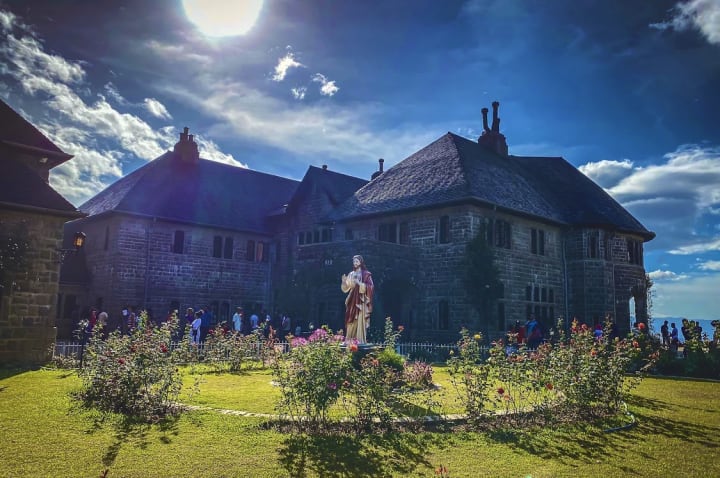
The British design of the garden maximizes the utilization of the extraordinary surroundings, much like it was done with the home. The terraced lawns, flowerbeds, and orchard, together with the living room, study, library, dining room, and bedrooms, all have views of steep mountain ranges that are between 1,800 and 2,100 meters above sea level and that together create the Sleeping Warrior, a mysterious silhouette. With a lovely hillside outlook across Hindu kovils, tea fields, and eucalyptus forest, the house is surrounded by an orchard of fruits and plants that spans acres. The estate is worth seeing for its cutting-edge construction, which includes imported wood furnishings, fireplaces in every room, and water systems with mountain-inspired design.
In honor of the Kentish village where he was born, Villiers had excellent period furnishings, linen, carpets, porcelain, silver, and glassware imported from England for his house, which he christened Adisham. On the lawns, English tea and cabbage roses were in bloom. In the cold mountain air and tropical sunshine, strawberries, apples, and Victoria plums matured. Albertines and honeysuckle grew over the porches and windows. Even Villiers' Daimler had an English chauffeur.
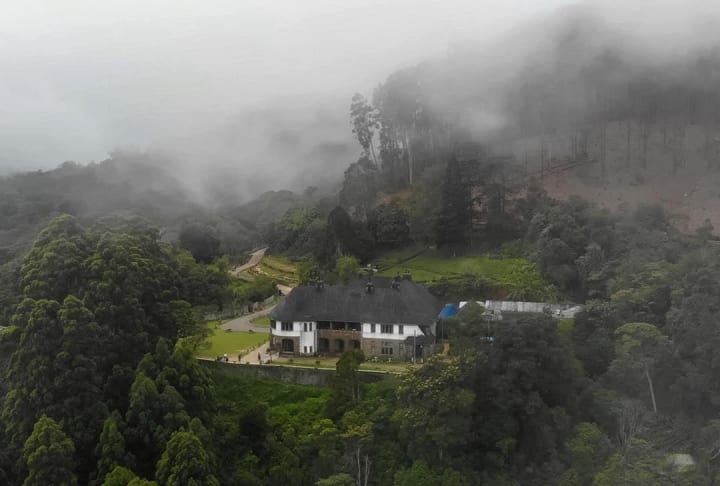
History
This noble home is profoundly infused with the spirit of Thomas Lister Villiers. With just 10 pounds sterling in his pocket, Villiers arrived in Ceylon in 1887. He was the son of Rev. Henry Montague Villiers and was born in 1869 at Adisham Rectory in Kent. He was the grandson of Lord John Russell, who served as British prime minister twice.
Villiers attended public schools and decided to pursue adventure in the colony of Ceylon rather than settling down to a commercial or political career in England. He started working as a trainee planter (a creeper) on Elbedde Estate in Bogawantalawa not long after arriving. He moved to Brazil after being married to a tea planter's daughter in 1896. Four years after his return, he established his own tea estate, the Dikoya Group, in Ceylon.
Villiers joined the Colombo trade and estate agency company of George Steuart in 1905 and advanced to become its chairman in 1928, a position he held until his retirement in 1948. He participated in politics in Ceylon as well.
Sir Thomas started construction on his ideal rural residence while serving as chairman of George Steuart. At Haputale, he chooses a picture-perfect location with views of Ceylon's tallest mountain ranges, virgin forest, and hills and valleys. The house was built in the Tudor style, emulating Leeds Castle in Kent, and had tall, narrow turret windows and chimneys, as well as sturdy granite walls made of locally mined stone. It appeared to be an Elizabethan country estate in every way, the tropical getaway of a lonely Englishman who was missing the places where he had grown up. In order to guarantee that his rural residence had opulent furnishings, Villiers spared no money. Burma teak shingles that were flat were used to cover the roof. Burmese teak was used for all of the doors, windows, paneling, stairs, and flooring. Four sturdy English oaks, polished but otherwise left unaltered, make up the magnificent pillared landing of the main staircase, which is decorated with pictures of his relations, the Clarendons and the Dukes of Bedford.
At its home parties, the governor and notable guests to the island were among the social elite of Ceylon at the time. The chatelaine of Adisham, Lady Villiers, was a lovely, kind person and a charming hostess. She was a skilled painter, and the walls of the library and the living room are decorated with her oil paintings and watercolors, most of which feature sea life. Both of the Villiers' two kids passed away before their parents: Their one and only grandchild, Stephen, who resides in England, recently traveled to Sri Lanka to research for a BBC story on Adisham. After retiring to Kent, Sir Thomas passed away on December 21, 1959. After Sir Thomas left George Steuart in 1949, the Sedawatte Mills purchased Adisham along with all of its furnishings, fixtures, and other belongings. Adisham and its 12-acre grounds were purchased by the Roman Catholic Church in 1961, and the monks of the Congregation of St. Sylvester, a missionary order that arrived in Ceylon in the 1840s, used it as a monastery and novitiate. Even now, the Sylvestrines maintain Sir Thomas and Lady Villiers' sitting rooms in immaculate condition. Even though the Regency clock on the mantle of the elegant fireplace, with its dazzling fire-irons, has ceased ticking, the library and its cabinets of polished oak are neatly organized. The Dukes of Bedford are arranged in a long line looking down from the walls, and one has the impression that Sir Thomas may enter at any moment shouting to his hounds.
Every aspect of the drawing room has been retained. Even though the Lancashire broadloom on the chairs and the Ax Minster rugs have softly aged, the William IV furniture is polished and can be seen from above in David Paynter's study of Sir Thomas. The Georgian gate-legged table is set for tea with Wedgewood jasper china, while a game of patience is partially completed on the Dutch marquetry card table. The rustling you hear is only the wind sighing among the forest trees, not the swish of silk gowns on the immaculately maintained great staircase. The patio outside the morning room overlooks the bright grounds, which are overrun with a hundred different rose kinds. You'll not find happiness at the end of the road if you can't find it along the way, a signboard outside the gate warns. The natural bird sanctuary in Adisham is among the most beautiful attractions there. Brightly colored orange mini-verts, green barbets, blue magpies, paradise flycatchers, hornbills, golden oreoles, and a slew of other birds that reside on the wooded slopes of the nature reserve above Adisham swoop down to gorge themselves on apple and plum trees.

When the rising bell rings at 05.30 in the morning mist, the novices and priests' day starts early. From November to January, when the north-east monsoon whips down the Tangamalai wind-gap, it is always cool and occasionally freezing. When the priests are kneeling in prayer and meditation in the little chapel decorated with an image of St. Benedict, the gong signals muster for the tea-estate workers on the neighboring Glenanore Estate.
Breakfast is provided at 8:00 a.m. and is hearty and home-grown. All meals are served in the simple, austere refectory. The next two hours are spent in stillness, reflection, and study. Two hours of manual labor are then required in the kitchen, dairy, home, laundry, orchards, flower and kitchen gardens. Lunch of rice and spicily spiced curries with fresh vegetables from the gardens is served after chapel prayer. The next phase is leisure, during which a sense of humor and a happy disposition are cultivated. After an hour of physical labor, a brief break for tea, stillness, prayer, study, more prayer, food, entertainment, and study, the monastery is plunged into complete silence beginning at 22:30 hrs. The boys can see the mist around the Sleeping Warrior from the windows of their bedrooms. The vista is breathtaking and paradise appears close at hand on starry evenings.
Accommodations are provided for 12 guests; however, it should be noted that Adisham is neither a for-profit guesthouse nor a Villiers Museum that welcomes drop-in visitors. People who value a Christian spiritual experience, advice, and direction in a setting of unrivaled serenity, quiet, and beauty would find it appealing. The spacious accommodations are cozy and provide some of Sri Lanka's greatest mountain views. The cuisine (three major meals and afternoon tea) is straightforward but delicious, and the environment is uplifting and tranquil.

Time To Visit
The region where Adisham Bungalow is located benefits from a year-round, pleasantly cool climate because to its location in the country's central high ranges, where you can also expect seasonal snowfall and mild rainfall. The ideal months to visit Adisham Bungalow are from May to July since they are warmer and less likely to see rain. Additionally, these months are lovely for visiting tea farms. Only on weekends are visitors permitted to visit from 9.00 am to 4:00 pm ( Poya days, public holidays, Saturday and Sunday).

How to get
From Colombo
From Darley Road, use the Katunayake Expressway. Highway Southern, please. To go to Wellawaya-Ella-Kumbalwela, take the Colombo - Galle - Hambantota - Wellawaya Highway. Haputale - Dambetenne should be continued.
On Keppetipola, Boralanda, and Haputale Road, keep going. To get there, go to Adisham Road via car.
From Bandarawela
Toward Bandarawela-Poonagala-Koslanda Road, turn southeast. Onto Beragala-Hali Ela Highway with a sharp left.
onto Beragala-Hali Ela Highway, turn left. At Gayathri Traders, take a slight right onto the Keppetipola, Boralanda, and Haputale Road. To continue on Adisham Road, keep to the left.

Train : https://zeloan.blogspot.com/2022/08/ella-odyssey-train-in-sri-lanka.html
Places to Visit
- Haputale

Haputale, which is located in the Badulla District of the Uva Province at a height of 1431 meters above sea level, is part of that region. One of the three main tea-producing regions in Sri Lanka is called Uva, and it stretches from Haputale to Badulla. Haputale is flanked by hills covered in cloud forests and slopes covered with tea plantations. Train travel is one method to explore this region. On the route from Kandy or Nanu Oya (Nuwara Eliya) to Ella or Badulla, there is a train station called Haputale. The Colombo-Badulla route (A16 highway from Beragala to Hali Ela) passes via the Haputale pass, from which a side road leads to Nuwara Eliya.
Read : https://zeloan.blogspot.com/2022/09/haputale-in-sri-lanka.html
- Dambatenne Tea Factory

The Dambatenne Tea Factory is a public tea processing facility located in the Haputale neighborhood, 10 kilometers east of the city. In the latter half of the 19th century, Sir Thomas Lipton began to acquire tea estates in Ceylon. He bought Dambetenne in the year 1890. The largest tea plantation in the Uva area of Sri Lanka, this estate was home to Sir Thomas J. Lipton. Despite the estate changing ownership in the 1930s, some of the original Dambatenne Tea Factory equipment is still in operation. The Dambatenne Tea Factory does not charge a hefty admission price.To tour the upper chambers where the tea leaves are put into machines for drying before going through the refining process, which takes place below, you must wait until one of the employees is available to show you around. Except from the upper chamber, where the guide may grant permission, photos are often not allowed. By the way, the current version of Lipton Tea is not a Uva Tea from Dambatenne in Sri Lanka, but rather a fusion of 20 to 30 different tea varietals from throughout the world, particularly Kenya.
- Lipton Seat

The Haputale region's top attraction is thought to be Lipton Seat. It is situated on the Dambatenne Tea Estate's Poonagala Mountain. Due of Haputale's breathtaking scenery, Sir Thomas Lipton, the creator of the firm of the same name, fell in love with it and built his tea estate nearby. Near Dambatenne, there is a particular view point that Thomas Lipton preferred the best. He used to spend a great deal of his free time here. Because of this, it is now referred to as "Lipton Point" or "Lipton's Seat." It developed into a rather well-liked endpoint for a 7 km ascent from Dambatenne. But jeeps or three-wheelers may also approach it. At 1970 meters above sea level, Lipton's Seat is located. If the weather is clear, you can see all the way to the south coast from here. Be warned that mist covers Lipton's Seat for the most of the day, especially in the afternoon. Early in the morning is the ideal time to see the viewpoint.
- Diyaluma waterfall

Even though it takes effort to get to the summit of Sri Lanka's second-highest waterfall, the benefits are worthwhile. There are many infinity pools at the summit that provide breathtaking views and are the ideal places to cool down in the heat. There aren't many vistas like it anyplace in the world, and if you go at the appropriate time, you won't see anybody else. The trip takes 1.5 hours each way, so give yourself at least half a day!
There are three sets of pools, so you'll need a lot of time to explore them all. The hike to the top takes around 30 to 45 minutes. It's worthwhile to view the falls from the bottom as well. It is a straightforward drive-up picture stop. We also took a 10-minute hike from the falls' base to a viewpoint and pool halfway up the falls. To the left of the falls, you'll find a clear trail; take that up through the rocky terrain until you reach the pool.
- Madulsima
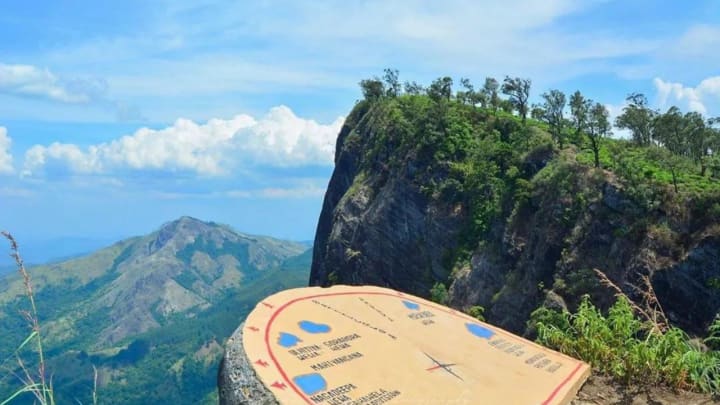
In Sri Lanka's Uva province is the hamlet of Madulsima. It is a charming community with mountains that is well-known for camping and trekking. The Madulsima Mini World's End is one such well-liked site and a well-known trekking location in the region. While hiking to Madulsima, many travelers also enjoy camping among the clouds.
Read : https://zeloan.blogspot.com/2022/07/madulsima-in-sri-lanka.html
- Idalgashinna
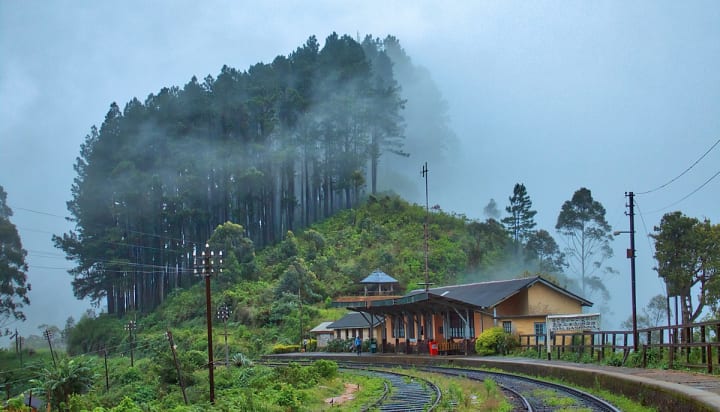
Idalgashinna is a little hamlet in Sri Lanka's Uva Province's Badulla District. It is situated in the Haputale-Namunukula mountain range at a height of approximately 1,615 meters (5,299 feet) above sea level. The Idalgashinna Estate is located in this region, and the closest significant town is Haputale, which is located approximately 9 kilometers south on the railway. The Thangamale Bird Sanctuary is situated between these two locations. The Welimada Divisional Secretariat oversees education in the region and is responsible for Idalgashinna Tamil Vidyalaya (Idalgashinna Tamil College), Beauvais Tamil Vidyalaya, and Ellethota Vidyalaya.
Read : https://zeloan.blogspot.com/2022/08/idalgashinna-in-sri-lanka.html
- Bambarakanda Falls

Bambarakanda Falls, which descend the enchanted mountains rising from Horton Plains, are impressively tall at 263 meters. The waterfall, which is classified as the 299th tallest waterfall in the world, is located in the Kalupahana region of Sri Lanka's Badulla district. Kuda Oya, the source of numerous wonderful waterfalls amid the hills and the cascade that gives rise to this lovely horsetail-type waterfall, meets the Walawe River after a lovely voyage.
Read : https://zeloan.blogspot.com/2022/07/bambarakanda-falls-in-sri-lanka.html
- Ella
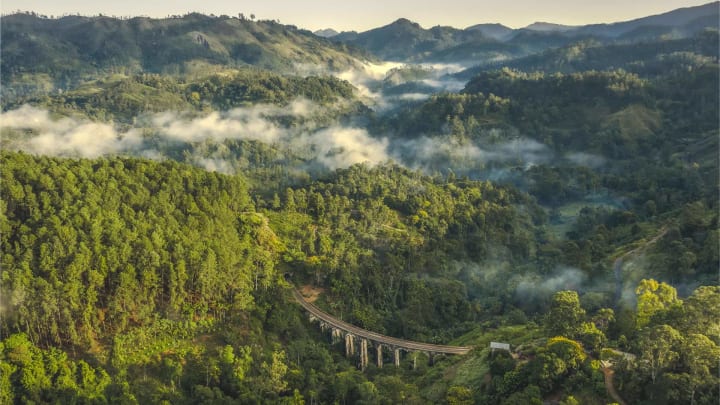
An Urban Council oversees the small town of Ella, which is located in the Badulla District of the Uva Province of Sri Lanka. It is located 1,041 meters (3,415 feet) above sea level and about 200 kilometers (120 miles) east of Colombo. Rich in biological richness, the region is home to a wide range of vegetation and fauna. Hills covered in cloud forests and tea plantations encircle Ella. Due to its elevation, the town experiences a colder climate than the lowlands around. Views across Sri Lanka's southern plains are possible from the Ella Gap.
Read : https://zeloan.blogspot.com/2022/07/ella-in-sri-lanka.html
- Kohonawala Village
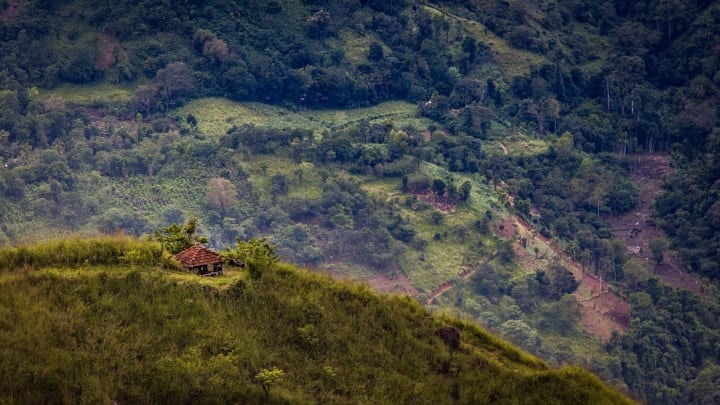
In the Badulla District, Kohonawala hamlet is situated just past the Passara Madulsima mountain range. With its breathtaking views, Kohonawala resembles a fairy tale village. It only receives sunlight for six hours (per day), from 9.00 am to 3.00 pm. The hamlet receives just six hours of sunshine due to the ring of mountains that surround it. As a result, Kohonawala is regarded as a unique settlement by visitors.
Read : https://zeloan.blogspot.com/2022/10/kohonawala-village-in-sri-lanka.html
Google Map:
About the Creator
Zeloan
I'm a Traveller, Blogger, and Content Creator. Visit Sri Lanka, and you can see the most beautiful places in the world and the remarkable hospitality here






Comments
There are no comments for this story
Be the first to respond and start the conversation.